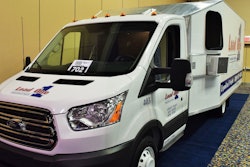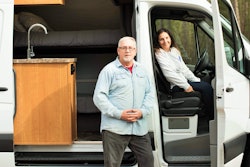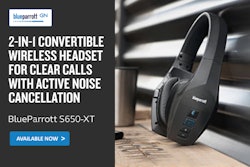At the Expedite Expo last year, West Michigan Expedite small fleet owner Steve McNeal, with his business leased with Load One, outlined a set of cargo-van-hauling basics for attendees in a session he prefaced by noting there are many ways to upfit a cargo van. In the session, though, he focused on ways to combat what is an essential issue for drivers of vans in expediting — comfort on any layover away from home. With his presentation, he shared this list of the pieces of equipment he detailed for use to set up an operation to save money, ultimately, while remaining as comfortable as possible in the small interior spaces a van affords. A round-up of McNeal’s talk follows as well, with some further elucidation of points from my talk with him earlier in the year ahead of this month’s feature on cargo van expediting and other downsizing-related van topics. If you missed that feature, find it here:
1. Heated mattress pad by Electro Warmth
Rather than a fairly common electric blanket for cold temperatures on overnights in winter, McNeal says this 12-volt-powered heated mattress pad “operates on almost zero electricity, and will go all night and keep you toasty warm” combined with a blanket, and without draining your house battery, about which:
2. Deep-cycle house battery
The battery will not replace your charging battery, McNeal says. “We use the Odyssey,” detailed in the pdf document as Model 31R-PC2150, which is “warrantied for four years.”
“You can use a manual switch or an automatic switch” to isolate the battery so that downtime power needs don’t drain your starting battery, McNeal says. Set up properly, automatic switching systems will audibly click in when you start the van. “If you’re not comfortable with electricity or don’t know what you’re doing,” the auto system can help increase comfort levels, and “work great for a year or year and a half” before failing, in McNeal’s experience, which you’ll know when the click is no longer heard.
He prefers manual switches, personally, he says, because they afford operators the ability to “jump” from the house battery if the starting battery fails. “You never have to worry about a dead starting battery.” Further details on necessary circuit breakers and the switches are available in the pdf.
In the Ford Transits he owns, the house batteries typically “sit right behind the driver’s seat,” McNeal says, in the Ram Promasters “in the floor in front of driver’s seat.” McNeal does invest in a plastic enclosure for them.
3. Generator for A/C and microwave appliances
“We’ve tried every generator available,” McNeal says, and “everybody’s got their favorite.” For him, he considers the pictured Harbor Freight model ($499 with coupons he’s routinely found) to be the best bang for the buck. “For another 100 you can add an extra warranty – at the end of two years, bring it in and get a new one. Through time, we’ve learned that you’ve got to get the least expensive solution that’s effective but that can be serviced out in the field.”








